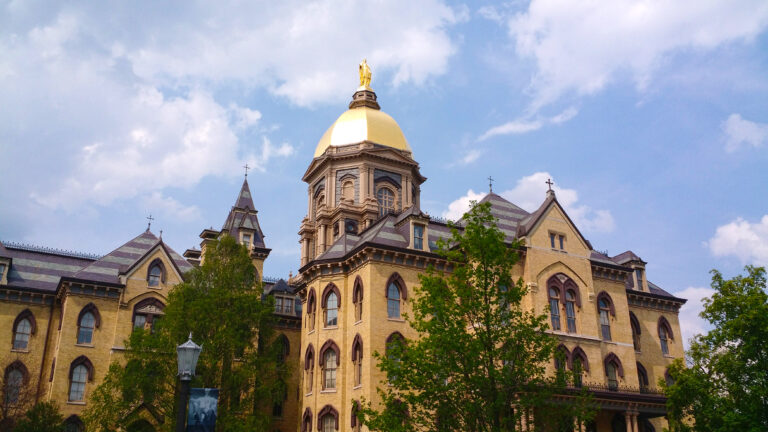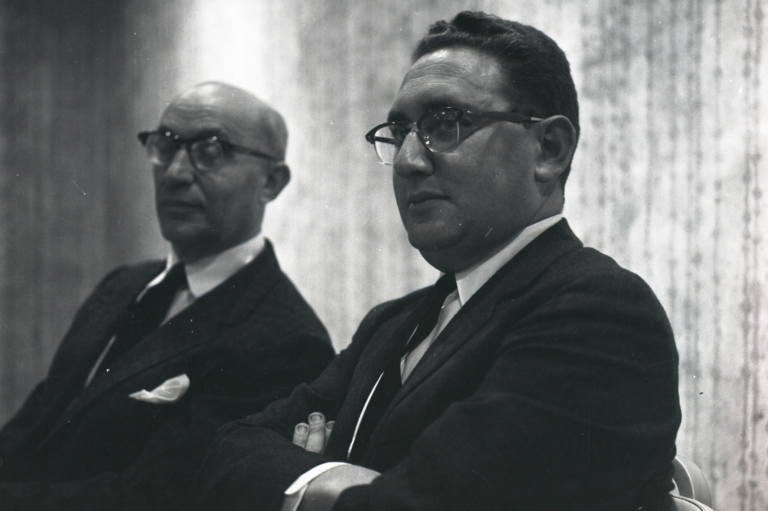The notion that a burgeoning world population is “running down” the natural environment is a pervasive theme of television and the other media as well as school instruction from kindergarten through college. Politicians and activists regularly stress the idea. One college textbook warns students that “the continued growth of human population” causes “loss of biodiversity” and “deteriorating… wilderness areas” and many other ills.1
How much, if any, truth is there in these fevered claims that beset us, and especially the young, on every side? In response, it should be remembered that human beings do not merely abuse the natural environment, destroying the animals and plants, and polluting the air and water. Human beings also plant trees and create gardens and parks and wildlife refuges. A balanced approach requires that we consider the effects of all these activities.
Claim: Overpopulation Causes Loss of Biodiversity
When it became obvious that California was not about to run out of redwoods, that, indeed, there were two million acres of rapidly growing redwoods with hundreds of thousands of acres locked up in parks, and with lumber companies planting millions of seedlings each year,2 an obscure bird came to the rescue of the tree-savers. The spotted owl, it was claimed, was losing habitat and therefore tree-cutting must stop. Biologists argued through a succession of court cases that failed to determine whether the bird was endangered, but logging fell to a fraction of its former rate. The price of timber and company profits soared as the supply shrank, but jobs disappeared and the cost of home-building rose,3 thus discouraging population growth. Small farmers found they couldn’t afford the high cost of permits and sold out to the big companies.
According to Population Action International, the spotted owl is not alone; indeed “an average of 27,000 species may be disappearing each year.”4 This colossal destruction is the result of “human population expansion,” bringing in its wake “deforestation,” “economic development,” and the “human tendency to convert wilderness into agricultural land.”5
Although grown-ups may find such material incredible, young people nurtured on it throughout their school years often accept it and act upon it. But there is no evidence to support it. University of Chicago paleontologist David Jablonski, who believes massive extinction will occur, nevertheless has admitted, “We have no idea how many species are out there and how many are dying.”6
Distinguished scientists have disputed the claims of mammoth extinctions, pointing out that the grants available for “research” into biodiversity create an incentive to exaggerate the problems.7
There is agreement, nevertheless, that there is a need for policies and actions to protect the world of nature.8 One reason why this is so is that government officials earn political support as well as better incomes for themselves from “development” projects such as highways, dams, and sewers that benefit special interest groups. The incentive to overbuild these projects by economic standards means that many of them have been extremely destructive to the environment while making little contribution to economic development.9
Another reason for the need for environmental protection is that many resources have “open access” characteristics. Ocean fisheries are a prime example, but wild animals and government-managed or owned land are others. Economics teaches that it is the “open access” or “common property” resources — those which no one owns — that are in most danger of over-exploitation, It is in the best economic interest of the private owner to care for what he owns. Thus, privately-owned domestic animals — cows, sheep, and horses — are in no danger of extinction. The wild American buffalo, however, was hunted almost to extinction in the times when everyone understood that a buffalo not killed was only being left for another hunter. Now that the remaining buffalo are privately owned they are in no danger of extinction.
Some of the most effective environmental protections have rested on the establishment and protection of private property rights, rather than government regulation and ownership. Just as the Good Shepherd was not the government or the “hireling” but the owner of the sheep, experience has shown, for example, that African elephants have higher rates of survival when local people are allowed to own them and benefit from their preservation as tourist attractions and other uses.10 On the other hand, government land reserves invite poaching for destructive illegal trade.
Likewise, experience has shown that the problem of over-exploited ocean fisheries can be alleviated by establishing property rights in fishing areas and incentives to maintain the health of the resource.11
Although government ownership might seem to promote conservation, all too often it turns out to be the equivalent of “common property,” where no one has an incentive to preserve and everyone has an incentive to exploit before someone else does.
Human beings do love nature and will make efforts to conserve it unless they face incentives that encourage or impel them to destroy it.
Claim: Overpopulation is Causing Massive Global Climate Change
This may be the most frightening of all the evils attributed to population growth. Allegedly causing seas to rise and flood vast areas, bringing huge increases in disease and malnutrition caused by massive declines in crop yields, and threatening a third of the world’s forests,12 the great global warming scare is truly a chamber of horrors.
Although the Clinton-Gore Administration, supported by the media, vigorously promoted the threat and insisted on the need for immediate national and international action to combat it, many scientists disagreed. By mid-1998 fifteen thousand scientists, including Dr. Frederick Seitz, former president of the National Academy of Sciences, had signed an Anti-Global Warming Petition, which said, in part, that there “is no convincing scientific evidence that human release of carbon dioxide, methane, or other green house gasses is causing or will, in the foreseeable future, cause catastrophic heating of the Earth’s atmosphere and disruption of the Earth’s climate.”13
Dr. Richard S. Lindzen, professor of meteorology at Massachusetts Institute of Technology, says, “The data provide no evidence of human-induced global warming.”14 Dr. Roy W. Spencer, senior scientist for climate studies at the National Aeronautics and Space Administration, says, “The popular perception of global warming as an environmental catastrophe cannot be supported with measurements or current climate change theory.”15
There has been no dispute that one of the “trace gases,” carbon dioxide, has increased in the atmosphere during the last century,16 but what the consequences of this might be are widely debated. Trees and other plants, of course, need carbon dioxide for their growth. Logically, it might be expected that increases in this trace gas — it constitutes about 360 parts per million in the earth’s atmosphere — would lead to greater growth of crops and forests. And this is exactly what some scientists have predicted and found in controlled experiments.17 Indeed, Keith Idso has described the hysteria over carbon dioxide:
“So what is their program for saving the planet? Would you believe reducing emissions of an innocuous gas that provides the basis for almost all life on earth?”18
Some scientists now believe that the earth may have warmed as much as one degree Fahrenheit (only) in the last 100 years, mostly at night, but that this was the result, not of human influences, but of a natural recovery from the “Little Ice Age” which lasted for several hundred years prior to the 19th century. History records that the early settlers of Greenland in the times before the Little Ice Age raised crops, something unheard of in more recent times.19
Scientists have received with skepticism the warnings of impending climate change issued by government panels during the Clinton-Gore Administration. In response to the “National Assessment of the Potential Impacts of Climate Change,” atmospheric scientist John Christy called it a “kind of joke.” Kevin Trenberth of the National Center for Atmospheric Research called it a “classic example of misuse and abuse of climate models.”20
The alleged depletion of ozone is another calamity threatened by the doomsayers and disputed by knowledgeable authorities. According to S. Fred Singer, an atmospheric and space physicist who participated in the earliest ozone measurements in the upper atmosphere, “The hole is a genuine phenomenon, a temporary thinning of the [ozone] layer every October, during the Antarctic spring. The thinning lasts for several weeks, and then the layer recovers. The exact mechanism is not understood…”21
Like ocean fisheries, the air over cities is a common-property resource. It provides no individual an incentive to keep it clean for others and it tends to become polluted in urban areas heavily dependent on automobiles. Combinations of taxes and regulations, however, have succeeded in making people act more like private owners and air pollution in United States cities has decreased greatly.22
Like the other environmental scares, the climate-change bogey tends to disappear under careful scrutiny.
For their own good, people should understand that the alleged trade-off between population and the environment is a false dichotomy. The population is not exploding. The trees are not disappearing. Mass starvation is not looming. The birds and animals are not vanishing. The climate is not drastically changing. With certain reasonable incentives for responsible behavior, there would appear to be no reason why people should not look forward to enjoying the beauty and life-sustaining abilities of nature for the foreseeable future.
History shows that one of the most effective ways to strip people of their freedom and give power to elites is to threaten some kind of “emergency.” Power seekers in our own times understand this well. The alleged environmental crisis is the useful emergency of this age.
This article is excerpted from a booklet by Dr. Kasun entitled Room for More: Population and the Environment. The complete booklet can be ordered for $2 by calling PRI at 540-622-5240.
Endnotes
1 Steven C. Hackett. Environmental and Natural Resources Economies: Theory, Policy, and the Sustainable Society (Armonk, NY: M. E. Sharpe, 1988), 12, 13.
2 Alston Chase. American Forest Council et al., State of the Redwoods Today (Portland, undated).
3 Ibid.
4 Population Action International, Why Population Matters, Washington, D.C., 1996.
5 Ibid.
6 “Species Loss: Crisis or False Alarm?” New York Times, Science Times, August 20, 1991.
7 Rowan B. Martin, “Biological Diversity: Divergent Views on Its Status and Diverging Approaches to Its Conservation,” in Ronald Bailey, ed. Earth Report 2000: Revisiting the True State of the Planet (McGraw Hill, 2000), 203–236.
8 Ibid.
9 See Jacqueline Kasun and Theodore Ruprecht, “Your Highway Taxes At Work: A Study of the Arcata Freeway,” Policy Analysis, September, 1977; also see Jacqueline Kasun, “A Pipe Too Far: The Story of Clean Water in Humboldt County,” USA Today, 16 July 1978.
10 Martin.
11 Michael DeAlessi, “Fishing for Solutions: The State of the World’s Fisheries,” in Ronald Bailey, Earth Report 2000, 85–114.
12 Michael Oppenheimer, speaking at panel on “Global Climate Change,” U.S. State Department, Washington, D.C., October 4, 1996.
13 The petition and its signatories appeared on the Petition Project website at sitewave.net/pproject/s33p427.htm.
14 Richard S. Lindzen, “Global Warming: The Origin and Nature of Alleged Scientific Consensus,” in John A. Baden, Environmental Gore: A Constructive Response to EARTH IN THE BALANCE (San Francisco: Pacific Research Institute for Public Policy, 1994), 124.
15 Roy W. Spencer, “How Do We Know the Temperature of the Earth? Global Warming and Global Temperatures,” in Ronald Bailey, Earth Report 2000, 24.
16 Keith Idso, “Rising CO2: A Breath of New Life for the Biosphere,” World Climate Review 3, No. 3, Spring 1995, 8–15.
17 Ibid.
18 Ibid.
19 S. Fred Singer, “Sure, the North Pole Is Melting. So What?” The Wall Street Journal, August 28, 2000.
20 Paul K. Driessen, “National Assessment of Climate Change released,” Environment & Climate News, Vol. 3, No. 8, August 2000, l.
21 S. Fred Singer, “Science: Use, Misuse, and Abuse,” lecture given at Saint Vincent College, Latrobe, PA, February 1, 1995, reprinted in eco-logic, September-October 1995.
22 Statistical Abstract of the United States, 1999, Tables 404, 405.










